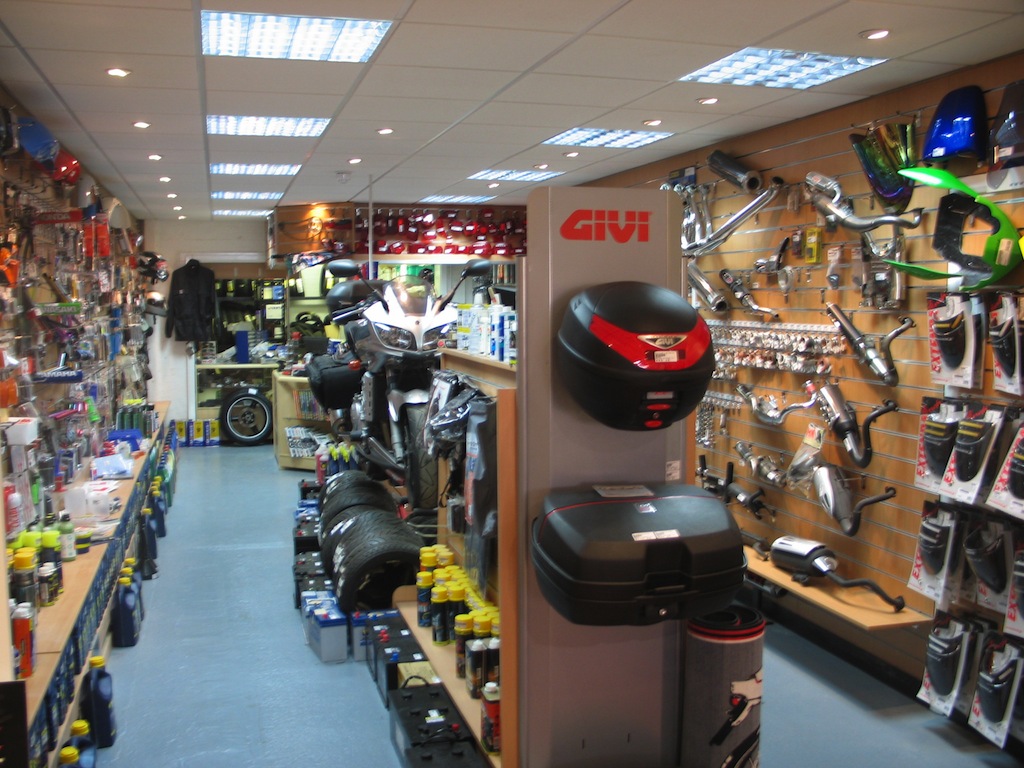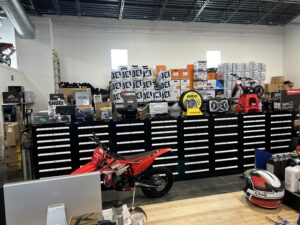See Our Motorcycle Shop for Professional Advice and High Quality Products
See Our Motorcycle Shop for Professional Advice and High Quality Products
Blog Article
Comprehending the Important Parts of a Motorcycle: A Comprehensive Guide for Fanatics
For motorbike enthusiasts seeking to boost their riding experience and guarantee their bikes run smoothly, comprehending the necessary parts of a motorcycle is vital. Each component, from the engine's complex operations to the essential function of the stopping systems, not only affects performance but also security and convenience. This overview will certainly stroll with the basic components that every rider should recognize with, allowing informed choices in both upkeep and possible upgrades. As we start this expedition, one must ask: just how does each element connect to create the smooth adventure every lover seeks?
Engine Parts

The camshaft plays an essential function in controlling the timing of the engine's valves, making sure the specific opening and closing necessary for effective fuel and air intake, along with exhaust expulsion. This timing is vital to keeping optimum engine efficiency and performance. Additionally, the carburetor or fuel injection system, depending upon the bike model, is accountable for mixing air with fuel in the right proportion for burning.
The air conditioning system, either air or liquid-based, functions to keep the engine's temperature level within functional limits, avoiding overheating and guaranteeing durability - motorcycle shop. Each component, diligently developed and integrated, contributes to the seamless procedure of the engine, specifying the motorbike's power outcome and overall performance
Transmission System
Indispensable to the bike's capability, the transmission system makes certain reliable power transfer from the engine to the wheels. This system makes up a number of important elements, including the clutch, transmission, and final drive, each playing an important role in translating the engine's power right into activity. The clutch, normally operated by a hand lever, offers to disengage the engine and engage from the transmission, enabling smooth gear modifications and controlled acceleration.
The transmission, typically referred to as the transmission proper, contains a collection of gears that motorcyclists can by hand shift through to readjust the bike's speed and torque output. These equipments are set up in a sequence that makes it possible for the motorbike to speed up smoothly and keep optimal engine performance across different speeds. A lot of bikes make use of a sequential transmission, calling for the biker to shift equipments in an established order.
Braking Devices
While recognizing the transmission system is crucial to utilizing a bike's power, just as crucial is the capability to regulate and stop that power efficiently, which is where braking mechanisms enter play. Brakes are important for safety and security and performance, providing the cyclist with the necessary control more info here to browse numerous over here surfaces and problems. Usually, bikes feature 2 sorts of braking systems: disc brakes and drum brakes.
Disc brakes are extra prevalent in modern-day bikes because of their remarkable efficiency. They include a brake disc, caliper, and pads. When activated, the caliper presses the brake pads versus the rotating disc, transforming kinetic energy right into warm, thus slowing the wheel. This system uses better heat dissipation, consistent performance, and enhanced stopping power, particularly in damp conditions.
Conversely, drum brakes, though less typical, are still located in some motorbikes. They function by pressing brake footwear versus the inner surface of a drum affixed to the wheel. While generally less effective in heat dissipation and stopping power, drum brakes are simpler and extra economical.
Understanding these braking systems' subtleties permits riders to keep their bikes correctly and appreciate the design that makes sure secure and efficient quiting.
Suspension and Guiding
Suspension and guiding systems are important components that considerably affect a motorbike's handling and adventure comfort. The suspension system, being composed of forks at the front and shock absorbers at the back, takes in roadway abnormalities, enhancing stability and control. Front forks, normally telescopic or inverted, compress and rebound to reduce effects, while rear shock absorbers maintain tire call with the roadway, critical for grip and security.
Steering, focused around the handlebars, connects the rider to the bike's directional control. The steering head bearings guarantee smooth procedure, permitting specific maneuverability. Correct positioning and upkeep of these bearings are essential for foreseeable guiding feedback and minimizing motorcyclist exhaustion.
The suspension's adjustability is another critical element; preload, damping, and rebound setups permit modification to suit different riding problems and designs. This versatility is necessary for enhancing performance, whether browsing urban roads or tackling tough tracks. Technologies like digital suspension systems provide real-time adjustments, improving experience quality throughout varied terrains.

Electric Solutions
After making certain a controlled and smooth experience via efficient suspension and guiding systems, attention turns to the electric systems, a crucial aspect of modern motorbikes. These systems play a critical function not only in beginning the engine but also in powering various elements that boost the capability and safety of the motorcycle.
At the heart of a bike's electric system is the battery, which shops electrical power essential for starting the engine and powering complementary systems - moto parts nz. The generator or generator, coupled with the rectifier-regulator, ensures the battery remains charged while the motorcycle is in procedure, transforming mechanical energy right into electrical power and maintaining voltage degrees
The ignition system, one more critical part, is accountable content for sparking the air-fuel combination in the engine's cylinders. Modern motorcycles typically utilize a digital ignition system, supplying better performance and integrity compared to typical systems.
Lights systems, including fronts lights, tail lights, and indications, are also important, guaranteeing presence and safety for the biker. Extra digital components such as sensing units, control devices, and presents contribute to sophisticated features like gas injection management, anti-lock stopping systems (ABDOMINAL MUSCLE), and digital dashboards, better improving the riding experience.
Final Thought
A thorough understanding of a motorcycle's crucial components, including the engine, transmission system, stopping mechanisms, suspension, steering, and electrical systems, is crucial for enthusiasts intending to enhance convenience, efficiency, and safety. Proficiency of these components enables for educated decisions concerning maintenance and upgrades, eventually boosting the riding experience. By incorporating this knowledge, bikers can ensure their motorbikes operate at peak efficiency and dependability, thereby making the most of both pleasure and durability of their lorries.
For motorcycle lovers looking to elevate their riding experience and guarantee their bikes run efficiently, understanding the crucial parts of a bike is paramount.Integral to the motorbike's performance, the transmission system guarantees effective power transfer from the engine to the wheels.While comprehending the transmission system is key to utilizing a motorcycle's power, equally important is the ability to manage and quit that power efficiently, which is where braking mechanisms come right into play. Typically, motorcycles include 2 types of stopping systems: disc brakes and drum brakes.
A complete understanding of a motorbike's vital components, including the engine, transmission system, braking devices, suspension, guiding, and electrical systems, is vital for lovers aiming to optimize convenience, efficiency, and safety.
Report this page